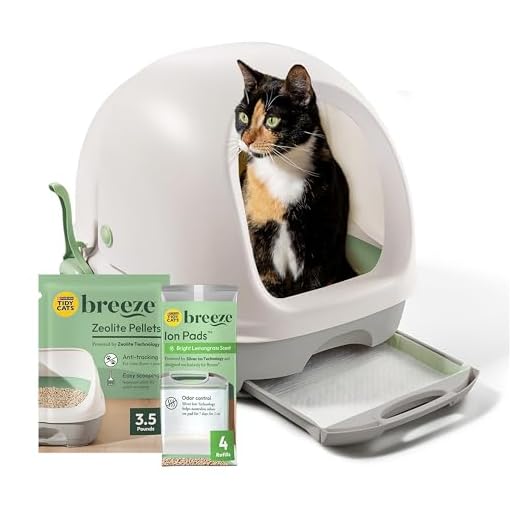



Utilize barriers such as mesh fencing or decorative stones to create a clear boundary. This can deter unwanted visits to specific areas and keep the environment tidy.
Consider planting herbs like lavender or rosemary around the perimeter. Many felines dislike the scent, making it less appealing for them to explore those areas.
Regularly cleaning the affected spots with an enzyme-based cleaner neutralizes odors, signaling that it’s not a suitable place for business. This can effectively change their behavior over time.
Offering a dedicated litter box outside can provide an alternative for your furry friend. Ensure it’s placed in a quiet, accessible location to encourage use.
Positive reinforcement works wonders. Rewarding with treats or affection when they use the designated spot can help establish good habits.
Lastly, observing their behavior can provide insights. Understanding triggers or patterns can assist in developing tailored strategies to maintain a clean outdoor space.
Identify the reasons for this behavior
First, consider environmental factors. Changes in weather, noise, or unfamiliar animals can prompt outdoor habits. A sudden storm can make a furry friend seek shelter elsewhere.
Next, check for stress triggers. New pets, visitors, or alterations in routine may cause anxiety. An unsettled mind often leads to changes in bathroom preferences.
Health issues are another possibility. Digestive troubles or infections might drive a need for more frequent relief outside the designated area. Regular vet check-ups can help identify these concerns early.
Also, instinct plays a role. Some prefer softer surfaces or certain smells. Exploring alternatives like designated spots or specific substrates might help redirect the behavior.
Finally, lack of stimulation can lead to exploration. Boredom may push a playful spirit to seek excitement in unexpected places. Providing engaging toys or interactive play can shift focus and energy indoors.
Provide Suitable Litter Box Alternatives
To ensure a comfortable experience, consider various litter box options. Try a larger box with low sides for easy entry. Some felines prefer covered boxes for privacy, while others thrive in open spaces. Experiment with different materials like clay, crystal, or biodegradable options to find what suits best.
Types of Litter Boxes
| Type | Description |
|---|---|
| Regular Box | Standard design, easy access and cleaning. |
| Covered Box | Provides privacy and reduces odor, but may deter some. |
| Self-Cleaning Box | Automatic cleaning mechanism, low maintenance. |
| High-Sided Box | Prevents litter tracking and maintains cleanliness. |
Additional Tips
Location matters. Place the box in a quiet, low-traffic area. Keep it clean; scoop daily and change the litter regularly. If a feline shows preference for a specific type of litter, cater to that choice. Encourage good habits with positive reinforcement, rewarding with treats or affection. For optimal health, consider options like best dental chews for cats to maintain overall well-being. If water quality affects your pet, learn how to lower the hardness of aquarium water.
Use Natural Deterrents in the Garden
Mix citrus peels, like oranges and lemons, into the soil. The strong scent repels many felines. Additionally, coffee grounds can be effective; sprinkle them around plants for a natural barrier. Cats usually dislike the smell and texture.
Herbal Solutions
Planting certain herbs can create a natural deterrent. Lavender, rosemary, and rue are known to keep unwanted visitors away. Their fragrances are pleasant for humans but off-putting for many furry friends.
Physical Barriers
Consider using chicken wire or decorative rocks in areas where digging might occur. The texture deters exploration and keeps paws from disturbing the soil. Also, creating raised beds can make it less appealing for any curious critters.
Create a Designated Outdoor Area for Your Feline Friend
To encourage outdoor activities while managing bathroom habits, establishing a specific area is key. This space should be appealing and inviting for exploration and relaxation.
Steps to Establish the Area
- Choose a quiet spot away from high foot traffic and noise.
- Use comfortable materials, such as soft soil or sand, to create a cozy surface.
- Incorporate natural elements like shrubs, small trees, or tunnels to stimulate curiosity.
Maintenance and Management
- Regularly clean the area to remove waste and keep it hygienic.
- Provide fresh water and shade to make it a desirable retreat.
- Monitor the space for any signs of unwanted behavior and adjust as needed.
By dedicating a special outdoor zone, it becomes easier for your furry companion to understand where to go, minimizing issues in other parts of your property.
Consult with a veterinarian for behavioral issues
Seeking advice from a veterinarian can be beneficial if unusual habits arise. Professionals can identify underlying medical conditions that may contribute to these behaviors. Regular check-ups ensure overall health, but specific consultations about behavioral patterns are crucial.
Prepare a list of observations to share, including frequency and context of the behavior. A vet may recommend behavioral therapies, changes in diet, or even medications if necessary. Understanding the root cause from a medical standpoint can be the first step toward improvement.
Consider discussing environmental factors as well. Sometimes, stressors at home or changes in routine can influence actions. A veterinarian can help create strategies tailored to individual needs, making it easier to address the situation effectively.
FAQ:
What are some reasons my cat might be pooping in the garden instead of using the litter box?
Cats may choose to poop in the garden for several reasons. One common reason is that they prefer the texture of soil or grass over litter. If the litter box is not clean or is in a location that feels unsafe, your cat might seek a more comfortable spot outdoors. Additionally, some cats may mark their territory outside, especially if there are other animals in the vicinity. Changes in their routine, stress, or health issues could also contribute to this behavior.
How can I deter my cat from using the garden as a bathroom?
To prevent your cat from pooping in the garden, consider making the litter box more appealing. Ensure it is clean, placed in a quiet area, and filled with a litter that your cat likes. You can also create barriers in your garden, such as using chicken wire or planting thorny bushes to make it less inviting. Additionally, using citrus peels or commercial cat repellents can help keep cats away from specific areas in the garden. Providing an outdoor litter box could also be a solution, allowing your cat to relieve itself outside while still having a designated area.
Are there any health concerns if my cat is frequently pooping outside the litter box?
If your cat is consistently pooping outside the litter box, it can be a sign of underlying health issues. Conditions like gastrointestinal problems, infections, or stress can lead to changes in bathroom habits. It’s important to observe other behaviors, such as changes in appetite or lethargy. If you notice any unusual signs, consulting a veterinarian is a wise decision to rule out any medical conditions and ensure your cat’s well-being.
What changes in behavior might indicate that my cat prefers the garden for bathroom needs?
Changes in behavior, such as avoiding the litter box or showing signs of anxiety when approaching it, can indicate that your cat prefers the garden for its bathroom needs. You may also notice your cat spending more time outdoors or scratching at the door to go outside. Additionally, if your cat is covering its feces in the garden but not in the litter box, this could suggest a preference for the outdoor environment. Observing these behaviors can help you understand and address the issue more effectively.









